Confronting the Modern Era
Arts
During this era Tennesseans sought to memorialize their past through the arts.
Cornelius Hankins studied art in Nashville and is renowned for his numerous portraits of Tennessee’s political leaders which included Confederate Generals Nathan Bedford Forrest and Benjamin F. Cheatham.
Lloyd Branson was an artist from Union County, Tennessee, and was first dis-cover-ed as a youth at the East Tennessee Division Fair. He went on to study art at the acclaimed National Academy of Design in New York, as well as to win numerous regional awards throughout the nation and the South for famous paintings such as The Sheep Shearing Incident, a work that depicted the meeting of John Sevier and his wife.
William Gilbert Gaul owned a studio near Fall Creek Falls in Tennessee, and later in Nashville. He was, and still is, the youngest full-time student ever accepted at the National Academy of Design. Prior to the 1880s, Gaul was the highest-earning American artist. Although he created many landscape paintings, Gaul was most famous for his graphic illustrations depicting the Civil War and World War I.
Brothers Ebenezer and Peter Ross Calvert were born in Yorkshire, England, and moved to Nashville in the 1870s. The brothers were not only recognized for portraits and miniature paintings, but were also successful photographers, as well.
Women artists from Tennessee also gained recognition during this period. Sara Ward Conely was a well-known portrait and mural painter in Nashville during the 1890s. In 1896 she was commissioned as an architect to design the Women’s Building at the Centennial Exposition, which featured a grand stairway, a library, and a model kitchen.
Anna Catherine Wiley was born in Coal Creek (now Lake City), Tennessee. She was an impressionist painter and a student of Lloyd Branson. Impressionism was an artistic style that developed in the late 1800s and is characterized by misty images that are created by using unmixed colors to give the appearance of reflected light. Wiley taught art at the University of Tennessee and in 1910 she won the “Most Meritous Collection,” award at the Appalachian Expo in Knoxville. Her famous work, The Letter, illustrates her impressionist style of using pure vivid colors to create cloudy images.
Ella Sophonisba Hergescheimer won an award for her art at the Appalachian Expo in 1910 as well. Often working from her studio in downtown Nashville, she is celebrated not only for her portraits of notable Tennesseans but for her brilliant landscape paintings as well.
Willie Betty Newman also maintained a studio in Nashville. Born near Murfreesboro, Tennessee, she studied art in Paris, France for 12 years gaining widespread acclaim during the late 1890s. She was commissioned to paint numerous portraits of prominent Tennesseans such as President James K. Polk and Governor James Frazier.
Literature
Tennessee literature during this period also emphasized culture and tradition. Virginia Frazer Boyle was crowned the Poet Laureate of the Confederacy at the age of ten by Jefferson Davis for her poem that honored both him and the South. By fourteen she was a published author, having her poems in national newspapers such as Harper’s Weekly. Her poem, “The Old Canteen,” summons the nostalgia of the Civil War and was featured in 1888. Click here to read this poem.
Boyle was honored by the United Confederate Veterans Association for the yearly poems she wrote to commemorate the Confederate dead, and she ultimately became a national figure during World War I with patriotic poems in support of the war.
Roark Bradford, from Lauderdale County, was another famous writer. As a famous novelist and storywriter, Bradford admired and was heavily influenced by his African American neighbors, and his writings reflect this unique exposure. He is famous for his work “Ol Man Adam and His Chillun” in 1928, which was eventually turned into a popular Hollywood movie, “Green Pastures” in 1936. Although his works sold widely and were not intentionally intended to demean African Americans, his writings received criticism in later years for their stereotypical portrayal of African American culture and personalities.
Mary Noailles Murfree was born in Murfreesboro, which was named in honor of one of her ancestors, but spent many summers at her family’s cabin in Beersheba Springs, a resort. When she started writing, Murfee used what she knew of mountains, mountain customs, and speech patterns from her experiences at Beersheba Springs. Her first book was titled In the Tennessee Mountains. She went on to publish 25 books and many short stories.
Thomas (T.S.) Stribling was the first Tennessean to win the Pulitzer Prize for literature, winning in 1933 for The Store. He was born in Clifton, Tennessee, and tried teaching and the law, before he started writing. His books mostly dealt with life in the South after the Civil War and the transformation of the southern economy from plantations to merchants and industry. He is considered a pioneer in modern southern literature.
The Fugitives
Perhaps the most acclaimed literary contribution of Tennesseans during this era came from a group of Vanderbilt students known as The Fugitives. The Fugitives were a literary group who were uncomfortable with the negative and backward portrayal of Southern traditional culture and society.
It included such notable writers as John Crowe Ransom, Donald Davidson, Alec B. Stevenson, Allen Tate, and Robert Penn Warren. The group met throughout the 1920s as a poet’s club, giving each other helpful criticism and participating in philosophical discussions.
Four of the Fugitives, Davidson, Ransom, Tate, and Warren went on to establish the Agrarians, a group that represented the culmination of their cultural and social defense of the South. This group produced the manifesto, I’ll Take My Stand: The South and the Agrarian Tradition, which was a book of essays defending Southern history, lifestyles, education, race relations, and artistic expressions. This text championed the agrarian way of life over industrial society and became an overwhelming success. It spoke to the nostalgia and conflict many Tennesseans felt as they progressed in a modern society, yet yearned for the traditions and practices of bygone times.
Picture Credits:
- A painting entitled In the Tennessee Mountains, by George Chambers, dated 1887, Monteagle. The painting, an oil on canvas, was exhibit at the "Second Annual Exhibit of Paintings" held at the Art Institute of Chicago in 1889. It was awarded second place. Tennessee State Museum Collection, 89.108
- Painting by Cornelius Hankins entitled, “Confederate Veterans Reunion.” This painting was created in 1924 depicts a reunion that took place that year in Memphis from June 3-6. Tennessee State Museum Collection, 75.145.
- Painting entitled, “The Last Letter.” This painting was created by William Gilbert Gaul and published in Century Magazine in 1890. It shows an open envelope near a dead Confederate soldier. Tennessee State Museum Collection, 83.79.
- Photograph of the Tennessee Centennial Exposition made by Calvert Brothers Photography. This photo was taken in 1897 in Nashville and shows the Pythian Building. Tennessee State Museum Collection, 4.451.4.
- Painting entitled “Abstract Landscape” by Ella S. Hergesheimer. This painting was probably created sometime between 1900 and 1930. Tennessee State Museum Collection, 78.43.28
- Painting of Catherine Gaut by Catherine Wiley. This portrait was made sometime between 1914 and 1915 in Elkmont, Tennessee. Tennessee State Museum Collection, 89.19.
- Still photograph showing actors on the set of the original production of “The Green Pastures.” This photo was taken in 1930 in New York City at Mansfield Theater. New York Public Library.
- Photograph of Allen Tate. This photo was taken sometime between 1935 and 1945. Tennessee State Museum Collection, 2002.95.3.
-
A photograph of Knoxville artist Adelia Lutz painting in her studio around 1888. Lutz studied art in Europe and had returned to Knoxville to start a career there. She painted portraits, landscapes (as shown in the photograph), and flowers--especially hollyhocks. Image number, 200-068-009, Calvin M. McClung Historical Collection, Knox County Public Library
Confronting the Modern Era >> Life in Tennessee >> How They Lived >> Arts
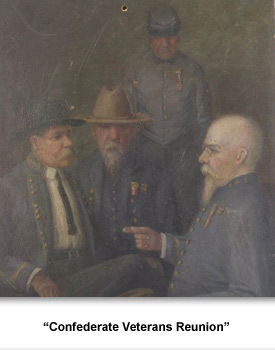
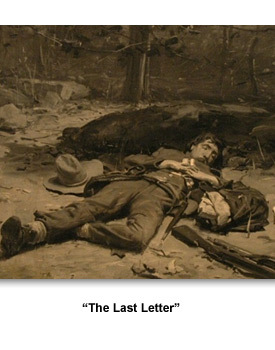
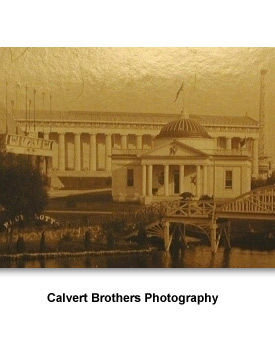
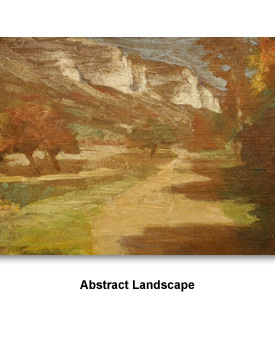
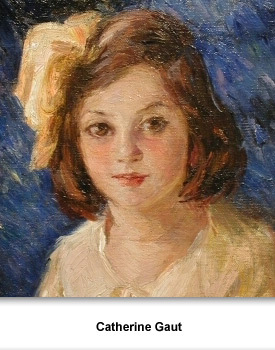
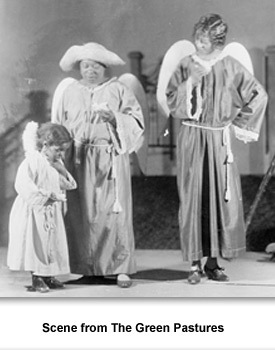
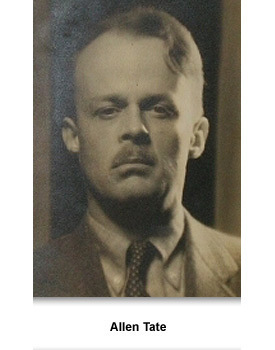
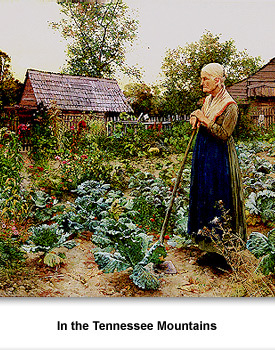
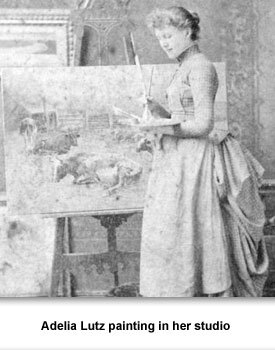
 Sponsored by: National Endowment for the Humanities
Sponsored by: National Endowment for the Humanities